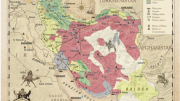By Naza Mohamed and Ali Mohamed
BAGHDAD
On March 19, 2003, U.S.-led forces invaded oil-rich Iraq to topple the Saddam Hussein regime on claims of links to al-Qaeda terrorist group and possession of weapons of mass destruction.
Washington based its rationale for the invasion, which was a response to the 9/11 attacks, that it wanted to prevent Saddam from producing chemical, biological and nuclear weapons.
One month after the invasion, the U.S. drew up a list of most-wanted Iraqis, consisting of the 55 members of the deposed Iraqi regime whom they most wanted to capture.
The Coalition Provincial Authority also disbanded Saddam’s Ba’ath Party, banning all members of the top four tiers of the party from government posts, causing thousands to lose their jobs.
Most top regime officials were either captured or killed following the invasion, including Saddam, his two sons, Vice-President Taha Yassin Ramadan and presidential adviser Ali Hassan al-Majid (“Chemical Ali”).
Others died in prison as Vice-President Taha Muhie-eldin Marouf, Prime Minister Mohammed Hamza Al Zubeidi, Deputy Prime Minister Tariq Aziz and Deputy Premier Hikmat Mizbah al-Azzawi.
Some other former regime officials are still languishing in prison, including former defense minister Sultan Hashim al-Tai and former deputy chief of tribal affairs and husband of Saddam’s daughter Jamal Mustafa al-Tikriti.
Other former officials were released by U.S. forces, including party members and biologist Huda Saleh Mahdi, presidential scientific adviser Amir Hamudi al-Saadi and Minister of Higher Education Humam Abd al-Khaliq Abd al-Ghafur.
At large
A few former officials, however, remain at large, including Saddam’s former deputy Izzat Ibrahim al-Douri and director of the Iraqi Intelligence Service Tahir Jalil Habbush al-Tikriti.
Al-Douri was said to have formed a tribal force with a view to retaking power in Iraq, but most of his loyalists were believed to have either been killed by Iraqi forces or Daesh militants.
Al-Douri’s fate and whereabouts remain unknown.
Some of Saddam’s aides and relatives have also fled the country to seek refuge abroad, including his wife and daughters.
“Many former regime officials have managed to flee Iraq to Syria, Jordan, Egypt, the United Arab Emirates and other countries,” Sobhi Nazem, a military expert, said. “Some others chose to seek refuge in the West.”
After the U.S. invasion, some members of the now-defunct Baath party sought to regroup, particularly in Sunni-majority provinces, where anger against the Shia majority was growing.
Among those members were former party members Seif al-Din al-Mashhadani and Fadil Mahmoud Gharib.
“The two had fled Iraq following the invasion, but returned again when Mosul fell to Daesh group,” Ibrahim al-Sumaidaie, a security and political researcher, told Anadolu Agency.
“They thought that a Sunni uprising was in the making, and they were dragged by Daesh to lead the uprising but were executed by the terrorist group along with 21 former army officers,” he said.
In 2014, Daesh overran vast swathes of territory in northern and western Iraq, but much of the territory were recaptured by Iraqi forces in late 2017.
Some Saddam-era army officers, however, managed to be reinstalled to their jobs in post-invasion Iraq.
“Many military officers managed to get close to political blocs in order to be reinstalled to their jobs in the army and security agencies,” Nazem said.
“They are now occupying high-level positions,” he said, without elaborating.
Source aa.com.tr



Be the first to comment at "15 years after Iraq invasion, Saddam’s remnants in disarray"